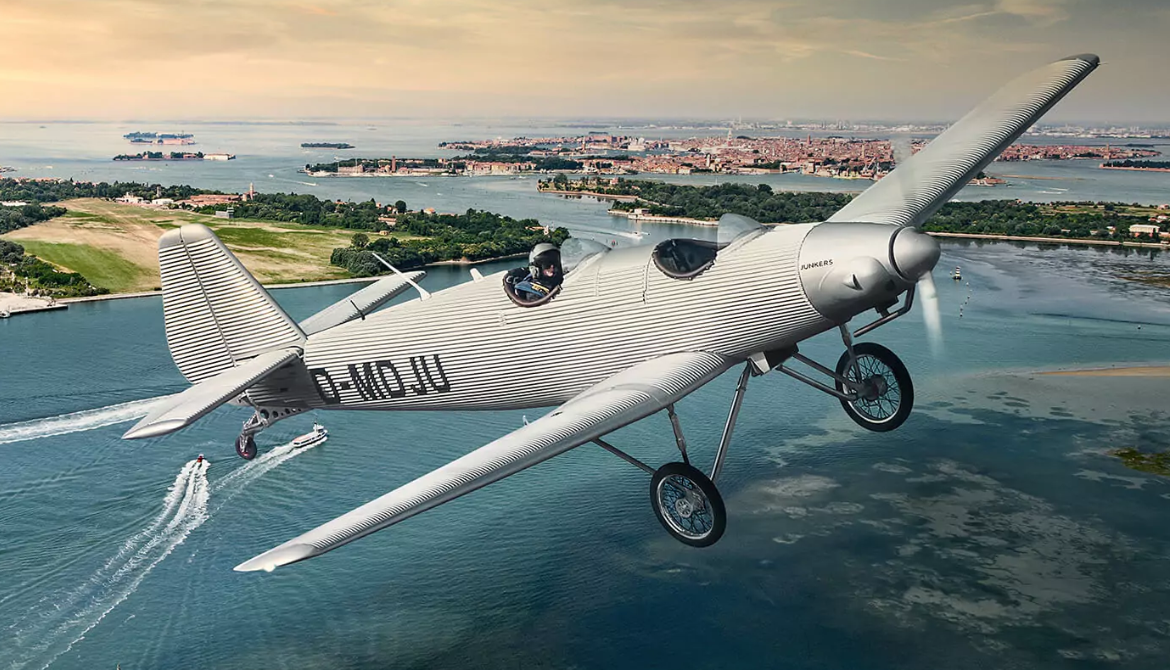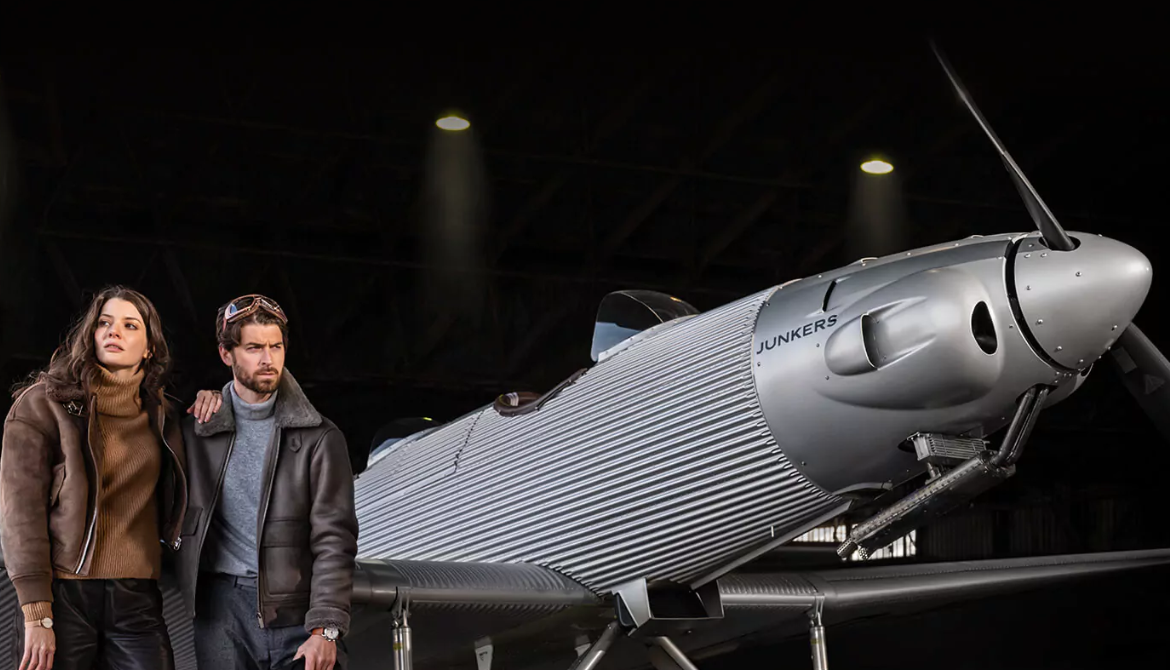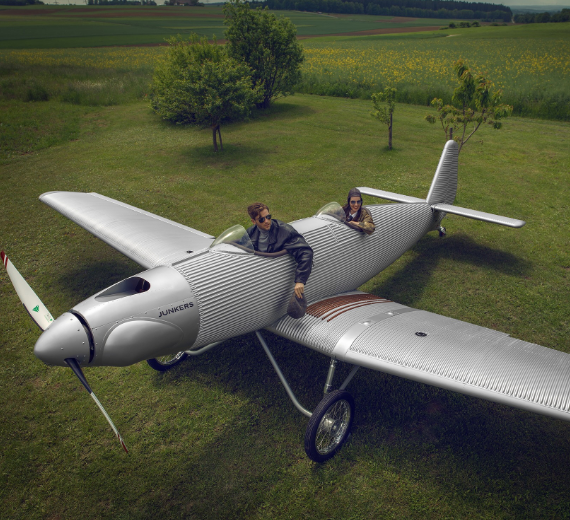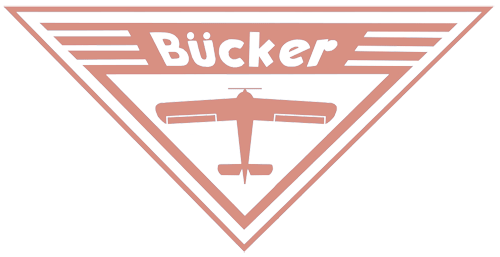.
History Hamburger Flugzeugbau (HFB)
Blohm & Voss BV 141
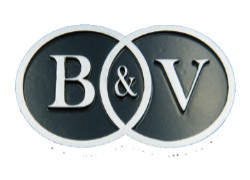
The Blohm & Voss BV 141 was a World War II German tactical reconnaissance aircraft, notable for its uncommon structural asymmetry. Although the Blohm & Voss BV 141 performed well, it was never ordered into full-scale production, for reasons that included the unavailability of the preferred engine and competition from another tactical reconnaissance aircraft, the Focke-Wulf Fw 189.
In 1937, the German Air Ministry – the Reichsluftfahrtministerium (RLM) – issued a specification for a single-engine reconnaissance aircraft with optimal visual characteristics. The preferred contractor was Arado with the Ar 198, but the prototype proved unsuccessful. The eventual winner was the Focke-Wulf Fw 189 Uhu; even though its twin-boom design using two smaller engines did not match the requirement of a single engined aircraft. Blohm & Voss (Hamburger Flugzeugbau) although not invited to participate, pursued as a private venture something far more radical. The proposal of chief designer Dr. Richard Vogt was the uniquely asymmetric BV 141.
Operational History

Three prototypes and an evaluation batch of five BV 141As were produced, backed personally by Ernst Udet, but the RLM decided on 4 April 1940 that they were underpowered, although it was also noted they otherwise exceeded the requirements. By the time a batch of 12 BV 141Bs were built with the more powerful BMW 801 engines, they were too late to make an impression, as the RLM had already decided to put the Fw 189 into production. An urgent need for BMW 801 engines for use in the Fw 190 fighter aircraft reduced the chance of the BV 141B being produced in quantity.
Vogt came up with several other asymmetric designs, including the piston-jet P.194.01, but none of those were actually built
0
KmCeiling
0
KmCombat RANGE
0
Km/hAircraft Speed
0
Max Crew
Photo Gallery
Abteilung Flugzeugbau der Schiffswerft Blohm & Voss
Blohm & Voss BV 141


Hamburger Flugzeugbau (HFB)
Bücker Bü 131 Jungman
General Info
-
-
- Crew: 3
- Length: 13.95 m (45 ft 9 in)
- Wingspan: 17.45 m (57 ft 3 in)
- Height: 3.6 m (11 ft 10 in)
- Wing area: 52.9 m2 (569 sq ft)
-
Powerplant
-
-
- Empty weight: 4,700 kg (10,362 lb)
- Gross weight: 5,700 kg (12,566 lb)
- Max takeoff weight: 6,100 kg
- Powerplant: 1 × BMW 801A 14-cyl. air-cooled radial piston engine, 1,147 kW (1,538 hp) for take-off at sea level
-
Performance
- Maximum speed: 368 km/h (229 mph, 199 kn) at sea level; 438 km/h (272 mph) at 5,000 m (16,404 ft)
- Range: 1,900 km maximum
- Service ceiling: 10,000 m (33,000 ft)
- Wing loading: 107.75 kg/m2
Armament
-
- Guns: 2 x 7.92mm MG 17 machine guns (fixed forward), 2 x 7.92mm MG 15 machine guns (rear-mounted flexible)
- Bombs: 4 x SC50 bombs
.
Links to Youtube & Others
The Plexiglas-glazed crew gondola on the starboard side strongly resembled that found on the Fw 189, and housed the pilot, observer and rear gunner, while the fuselage on the port side led smoothly from the BMW 132N radial engine to a tail unit.
Blohm & Voss BV 141
The tailplane was symmetrical at first, but in the 141B it became asymmetrical – starboard tailplane virtually removed – to improve the rear gunner's fields of view and fire.
Youtube Link
All 20 of the BV 141Bs that were ordered were produced and delivered.


